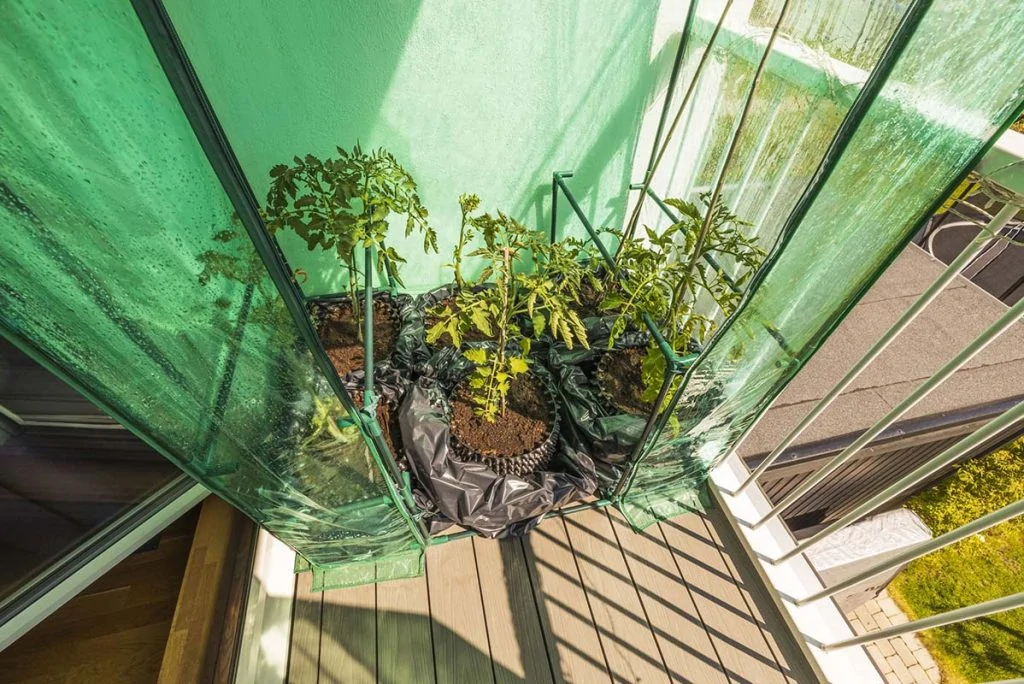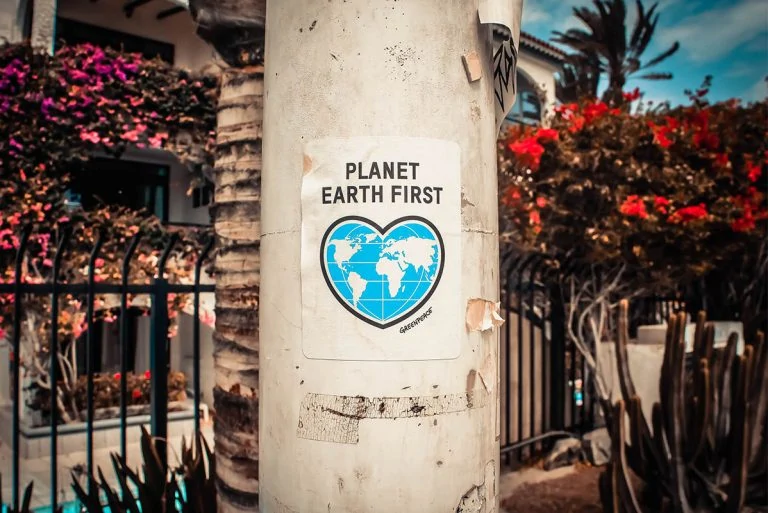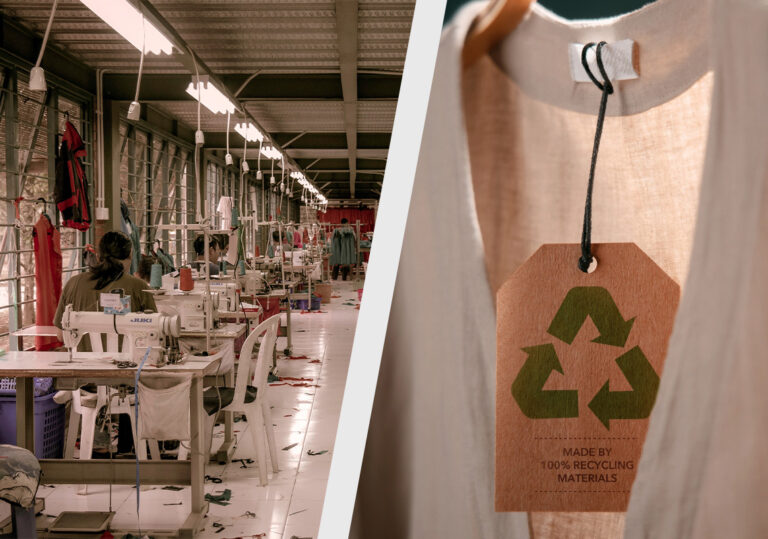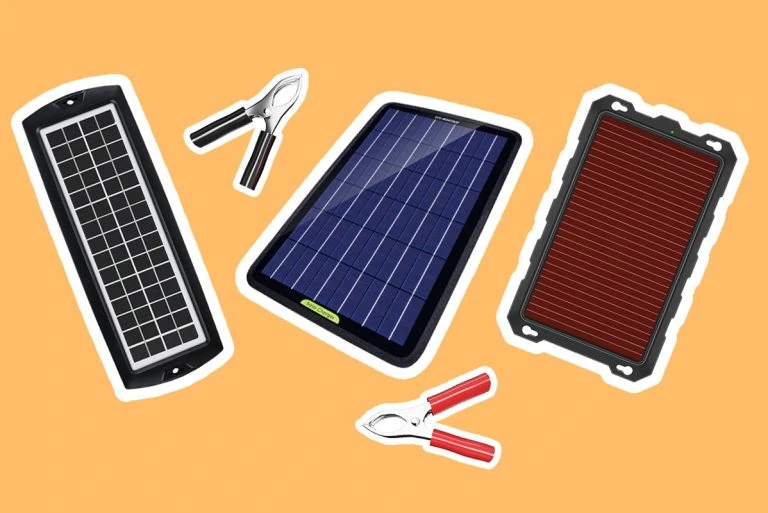Have you been wanting to reduce your environmental impact on the Earth but not sure where to start?
The following 25 facts about the environment will help you see exactly where the problems are and what’s causing them. And, the 25+ proposed actions that go along with those facts will lessen your impact — also called your environmental footprint — significantly.
Facts about the environment: an overview
The most important fact about the environment that underlies all other facts is: the need to clean it up from toxic chemical and hazardous waste pollution has never been greater.
In a March 2022 report, Dr. David Boyd, special rapporteur to the United Nations Human Rights Council, estimated that nine million people die prematurely every year because of environmental pollution.
In addition, Boyd points out that environmental pollution raises your risk of a large number of health problems including cancer, heart disease, stroke, respiratory illnesses, birth defects, and damage to neurological, immune, endocrine, and reproductive systems.
Unfortunately, that’s 21st century reality.
Planet Earth is in trouble because of this environmental pollution. What’s worse — and compounding the environmental damage — is our climate crisis. Scientists predict billions of people will no longer be able to live where they currently are by 2070 because it will be too hot.
Let that sink in for a minute.

Source: Climate.gov
Everything we take for granted about life that depends on a stable climate — including plentiful food, changing seasons, normal rainfall patterns — is in the process of ending unless people take immediate action to restore Earth’s balance.
This is precisely the major conclusion of the “code red for humanity” IPCC Report released in August 2021.
That Report is clear: Human activity created the environmental dilemma. Continued burning of fossil fuels will escalate many — if not all — of the environmental problems confronting us.
For example, you can’t miss the growing number of dismal news reports about:
- The exploding human population and the strain it puts on natural resources
- Antiquated laws regarding oil, gas, and mineral mining conducted in a capitalistic system of unlimited growth and leading to widespread environmental damage from spills, leaks, and wars
- Weak regulation concerning water and air pollution from intensive animal agriculture (factory farms)
- Ocean gyres full of plastic trash, discarded barrels of hazardous chemicals, and frequent oil spills/leaks
- Food waste generated all along the way from farm to table
- Vehicle emissions from internal combustion engines in cars, trucks, trains, ships, and airplanes.
You may justifiably feel overwhelmed. Even terrified.
The environmental messes we’re immersed in are inextricably linked to our climate crisis. Some scientists believe there is a cause and effect relationship between the two.

Source: Climate.gov
This means that with more and more burning — 2021 set the record with the greatest carbon emissions ever — there will be greater environmental destruction and damage.
But it also means that reducing or eliminating fossil fuel burning will likewise ease our environmental problems.
This is where you come in.
When people cut back on burning fossil fuels and live more sustainably, good things result:
- Restored environmental balance
- A stable and habitable climate
- Positive health outcomes for people.
Facts about the environment: environmental footprints
A personal environmental (ecological) footprint refers to all the things you do that have an effect on the physical environment — including its soil, water, and air. It’s a measure of all the natural resources you consume via goods and services and the waste you — and those products and services — generate.
In other words, your environmental footprint is a direct reflection of your lifestyle. It considers such aspects as the foods and beverages you consume, your job and hobbies, and how you get around.
Researchers A.J. Hoekstra and T.O. Wiedmann described the environmental footprint (EF) as a composite of many footprints including the following:
- Land footprint (LF) — accounts for the land used to grow your food and manufacture all the products you consume, as well as the land needed to store or absorb the wastes generated from those activities.
- Energy footprint (EnF) — assesses the amount of energy you consume directly and indirectly.
- Water footprint (WF) — includes the water needed to grow your food and make all the goods and services you consume, plus the water needed to treat wastes from production to end user.
- Carbon footprint (CF) — measures the amount of greenhouse gases emitted because of your lifestyle choices.
- Biodiversity footprint (BF) — refers to the threat to biodiversity due to human activities that you engage in or depend on.
In this blog post, we’ll consider 25 facts about the environment through the lens of these five major types of ecological footprints.
How to reduce your environmental footprint so that it matters
To look for guidance on how to lessen all five types of environmental footprints considered here, a 2017 article by Seth Wynes and Kimberly A Nicholas is both enlightening and instructive.
According to the authors, the most effective individual actions that reduce carbon emissions are not promoted by governments or even environmental groups — but should be.
In their report, Wynes and Nicholas quantify carbon emissions in terms of tons of carbon dioxide equivalents, noted as tCO2eq. In other words, they include in their calculations other greenhouse gases such as methane and nitrous oxide which have much greater heat-storing capacities than carbon dioxide itself.
Wynes and Nicholas concluded that individuals would contribute the greatest reduction in tCO2eq by doing the following:
- Have fewer children (58.6 tCO2eq per child)*
- Sell your car (2.4 tCO2eq)*
- Not flying (1.6 tCO2eq)*
- Buy green energy (1.5 tCO2eq)
- Buy a more efficient gasoline-powered car (1.19 tCO2eq)
- Buy an electric vehicle (1.15 tCO2eq)
- Switch to a plant-based diet (0.8 tCO2eq)*
- Note: the numbers in parentheses below reflect the amount of carbon dioxide equivalents saved every year
The authors consider all of these actions “high-impact.” However, they recommend the four noted with an asterisk as the most important you can do to lower your personal carbon footprint.
By the same logic, since a carbon footprint is a type of environmental footprint, we present 25 facts about the environment and show how you can reduce your personal environmental footprint in relation to them.
So, most of our suggestions stem from Wynes & Nicholas’ analysis of carbon footprints, but we apply them across all five types of environmental footprints listed above.
Again, they are:
- Land footprint (LF)
- Energy footprint (EnF)
- Water footprint (WF)
- Carbon footprint (CF)
- Biodiversity footprint (BF)
25 actionable facts about the environment
Facts about the environment: land footprints (LF)
Have you ever thought about how much land it takes to grow your food? Or how much acreage is used for trash dumps?
Regrettably, in the following facts about the environment and land, soil degradation through poor management and overexploitation is widespread.
The nonprofit Our World in Data estimates that meat eaters use way more land than vegans to produce their food. In other words, beef connoisseurs have a much higher land footprint than plant eaters.
Fact #1: 80% of all arable land on the planet is devoted to growing feed for livestock or for grazing them, while only 20% of all food calories produced comes from animals.
Here’s a breakdown of global land use:

Most livestock are reared in confined animal feeding operations (CAFOs), often called factory farms. There may be thousands of animals in a small building or feedlot.
Action #1: Switch to a plant-based diet.
Fact #2: In the United States, more than 90% of all livestock is reared in CAFOs.
Action #2: If you eat meat and dairy, buy only from local, small farmers practicing regenerative agriculture.
Fact #3: In the United States in 2018, approximately 50% of all municipal solid waste (146.1 million tons out of 292.4 million tons) was landfilled in over 1,200 active landfills in the country.
In other words, trash just slowly decomposes in the dump, contaminating the soil over time through its toxic and often hazardous leachate. Off gassing from methane — a potent greenhouse gas — is not recovered as an energy source.
Although the U.S. isn’t running out of landfill space any time soon, transforming the economy from a linear model to a circular economy would drastically reduce the amount of trash. That land could be used for other, more productive purposes.
Action #3: Take steps toward a zero-waste lifestyle. Reuse, repair, and reduce as much as possible.

Fact #4: In 2018, (the latest year for which data are available), most trash in the U.S. dumped in landfills was recyclable — but it wasn’t actually recycled.
Here’s the breakdown:
- Paper/paperboard: 23%
- Glass: 4%
- Metals: 9%
- Plastics: 12%
Action #4: Recycle everything you possibly can. You may need to find a recycler in your area to do so.
Fact #5: Only metal and glass are infinitely recyclable with no change in material integrity. On the other hand, paper is recyclable up to 5-7 times. Most types of plastic can be recycled only once.
Action #5a: Call or email companies to cancel junk mail catalogs.
Action #5b: Read online newspapers and magazines rather than paper.
Action #5c: From all companies providing you goods and services, request paperless billing and pay online.
Action #5d: Choose products in metal or glass containers rather than plastic ones.

Facts about the environment: energy footprints (EnF)
It takes energy to manufacture all the products you consume and store your data in cyberspace. Of course, it takes energy to move from place to place, regulate temperature in buildings, keep the lights on, and cook your food.
How much energy exactly to do all that and more? You may be surprised by the numbers.
Unfortunately, in the following facts about the environment and energy, not only is energy production associated with significant environmental degradation. There are huge amounts of waste all along the chain from generation to the end user.
Fact #6: Every day in the U.S., each person uses indirectly through daily activities:
- 2 gallons of oil
- 8 pounds of coal
- 252 cubic ft. of fossil gas.
The burning of all these forms of nonrenewable energy contributes to our climate crisis.
Action #6a: Where possible, purchase carbon-free energy from your supplier for residential uses. Request that your school or employer do the same.
Action #6b: Install rooftop or ground mount solar at your home.
Action #6c: If you can’t install solar at your residence, participate in a community solar or wind program.
Fact #7: Each person in the U.S., on a daily basis, consumes 219 kilowatt-hours (kWh). By comparison, a person in India uses 19 kWh per day.
Action #7: Install more eco-friendly home insulation to help you use less energy to heat or cool your home.

Fact #8: In one day, the average person in the U.S. uses 33.4 kWh of electricity. In India, it’s 2.7 kWh.
Action #8a: Reduce your electricity consumption by using more elbow grease instead of plugging in small appliances for daily household tasks like cleaning and cooking.
Action #8b: Transition to an all-electric home using the most energy efficient appliances available.
Action #8c: Start your all-electric conversion with a super-efficient induction plate, stove top, or oven.
Fact #9: Americans only actually receive 25% of the electricity they pay for. Most of it has already been vented as waste heat at the power plants where it is generated.
Action #9a: Using smart appliances like this air fryer or smart wall outlets to help you conserve energy at home.
Action #9b: If possible, get off the electric grid and install solar + storage at your home, especially if you live in a wildfire-prone area.
Action #9C: If you can’t afford solar at home, look into community solar or wind.
Read our separate post where we share more interesting facts about electricity.
Fact #10: In order to extract fossil fuels for energy use, companies use environmentally destructive practices: mining and drilling.
Action #10a: Since heating and cooling consume the greatest amounts of residential fossil fuels, do what you can to reduce your usage. Set your thermostat higher when it’s hot outside and lower when it’s cold. A smart thermostat will help. Dress appropriately to stay comfortable. Stay cool with iced beverages or warm with hot fluids.
Action #10b: Invest in geothermal heating and cooling at your home.
Facts about the environment: water footprints (WF)
Do you know that you eat water? With every bite you take, it’s true. In fact, it’s through diet that your water footprint is the greatest.
Sadly, in the following facts about the environment and water, food production today is associated with extreme environmental degradation. Here’s how.
Fact #11: It takes 1,800 gallons of water to produce one pound of beef. Of that, about 98% goes to grow the feed and forage the cattle eat.
Action #11a: Instead of beef and other animal foods, consume more beans and legumes which take about 500 gallons per pound.
Action #11b: If you eat meat, choose pasture-raised varieties that rely on rainwater instead of irrigated water.
Fact #12: According to a report by the Natural Resources Defense Council (NRDC), a confined animal feeding operation, (CAFO), with 82,000 laying hens produces 2,800 tons of manure on an annual basis. A CAFO with 10,000 beef cattle produces up to 117,000 tons of manure every year.
The manure may be spread over fields as fertilizer or kept in lagoons (artificial ponds). During heavy storms, it’s common for the ponds to overflow, contaminating drinking water.
Action #12a: If you’re unable to go vegan, try participating in Meatless Mondays.
Action #12b: Support organizations like the NRDC or the Environmental Defense Fund (EDF) working toward getting stricter state and federal laws about CAFOs.
Fact #13: In the U.S., 22% of landfill trash is food that is compostable. This represents literally billions of gallons of wasted water, equivalent to 21% of all water used in agriculture.
Action #13: Compost your food waste at home and use it as your houseplant fertilizer.

Fact #14: Approximately 1 billion pounds of pesticides are used to grow crops in the United States every year, worth about $8 billion.
Agricultural runoff from fields enters waterways and becomes the major source of water pollution, causing damage to aquatic life and ecosystems (for example, algal blooms), and contaminating drinking water.
Action #14: Support organic agriculture that prohibits pesticides and synthetic fertilizers by buying organic foods.
Fact #15: Approximately 30-40% of all food produced in the U.S. is thrown out. This food waste occurs in all stages of production from the fields to your home.
Action #15a: Support local farmer’s markets to reduce transport time of perishables.
Action #15b: Grow your own organic garden to produce only what you need and preserve (dry or can) the rest!

Facts about the environment: carbon footprints (CF)
In the following facts about the environment and carbon footprints, fossil fuel burning is responsible for our climate crisis and associated environmental degradation.
Fact #16: In 2019, fossil fuel burning was responsible for 92% of total carbon dioxide (CO2) emissions in the United States.
Action #16a: Do whatever you can to get off the public utility grid. For example, you can install geothermal or solar at your home.
Action #16b: Purchase renewable energy through your supplier.
Action #16c: Conserve energy by driving a more fuel-efficient or an electric car, or opt for public transit.
Fact #17: Burning fossil fuels for energy in industry, and for transportation and electricity is the greatest source of air pollution, responsible for many harmful airborne substances such as sulfur dioxide, nitrogen oxides, and particulate matter.
Recent research shows that long-term exposure to air pollution increases your risk of dying from Covid-19.
Action #17a: Switch to an electric car or electric bike and use sparingly (for example, combine errands).
Action #17b: Do not fly for travel. Enjoy staycations or stay local.
Action #17c: Hold virtual business meetings and conferences rather than in-person events.

Fact #18: When total carbon dioxide emissions of a country are divided by that country’s population, the U.S. registers 14.4 tons per person in a year. By comparison, in India, it’s 1.8 tons/yr/person.
Action #18: Have only one child or one fewer child.
Fact #19: The top four foods with the largest carbon footprints are animal products. (See the graph below for the breakdown.)
Action #19a: Limit or eliminate meat and dairy from your diet.
Action #19b: If you choose to consume meat or dairy, support small, local farmers practicing regenerative agriculture.

Fact #20: People living in the U.S. have the highest carbon footprint from domestic flying: 386 kg carbon dioxide emissions per year. In India, it’s 8 kg CO2/yr.
Action #20a: Carpool in a hybrid or electric vehicle when possible.
Action #20b: Take the train instead of a plane.
Facts about the environment: biodiversity footprints (BF)
Do you know that the Earth is currently undergoing its sixth mass extinction event of all time? But this time, unlike the previous five, it’s human-caused.
In the following facts about the environment and biodiversity footprints, animal and plant species are disappearing at alarming rates due to various human activities causing environmental loss or degradation. Here’s what you can do to stop it.
Fact #21: Indigenous peoples, who make up less than 5% of the human population, protect over 80% of global biodiversity.
Action #21a: Support organizations of Indigenous peoples such as the Alliance for Land, Indigenous and Environmental Defenders (ALLIED) defending their environment from governmental or corporate takeovers.
Action #21b: Ask your government and the United Nations, which will benefit from ancestral knowledge, to include more Indigenous participation at national and international climate conferences.
Fact #22: Since 2000, the United States has lost more than 11 million acres of prime farmland to urban and suburban expansion.
In terms of forests, over 10 million acres were lost to housing and commercial projects from 1982 to 1997. By 2030, 26 million acres more are projected to be converted. This means there is less land to grow food on, and less land for wildlife. This phenomenon is called habitat encroachment. For people, living in distant places requires more driving to get to stores, schools, or jobs.
Action #22: Choose to purchase a pre-owned or pre-fab home in an established city or suburb instead of building a brand new home in a remote area.

Source: Bensonwood
Fact #23: Thousands of marine animals, representing hundreds of species, including endangered species, get tangled in and die from ocean plastic pollution every year. Single-use plastic makes up 89% of it.
Action #23a: Do not buy or use any single-use plastic, such as cups, bottles, silverware, and straws.
Action #23b: Support stores where you can bring your own containers and buy in bulk.
Action #23c: Choose to purchase brands with products in sustainable containers like glass or metal that are more likely to be recycled compared to plastic.
Fact #24: The Amazon rainforest, important in regulating global climate and serving as a carbon sink, is being destroyed at alarming rates. It is also rich in biodiversity.
Brazil released images for February 2022 showing a 62% increase in deforestation compared to last year. Now, a proposed road connecting Brazil and Peru through protected areas would further damage biodiversity.

Source: Wikimedia / Neil Palmer (CIAT)
Action #24: Since most deforestation occurs for cattle grazing and livestock feed production, do not purchase beef or beef products originating from Brazil.
Fact #25: The illegal wild animal and plant trade is a multi-billion dollar industry that is a major driver of species extinction and habitat loss.
Action #25a: Do not purchase any products made with illegally traded animals or plants.
Action #25b: Contact your government to demand more enforcement of trade rules and stricter laws against wildlife trading.
Key takeaways on facts about the environment
You don’t have to get discouraged by all of the facts about the environment concerning pollution found in literally every corner on Earth. There are things you can do today to lighten your personal environmental footprint.
You can also take steps toward initiating the systemic changes needed to restore environmental health completely.
This article lists 25 facts about the environment on issues ranging from global population and animal agriculture to plastic pollution and car emissions. Along with them, you’ll find 25+ ways to make a difference and reduce your personal impact on the environment.
The facts about the environment listed in this article give you plenty of opportunities to start making a difference today.
Whatever the issue that speaks to you the most, there are actions you can take to lighten your environmental footprint. The restoration of Earth’s environment is always the ultimate goal of green living.














